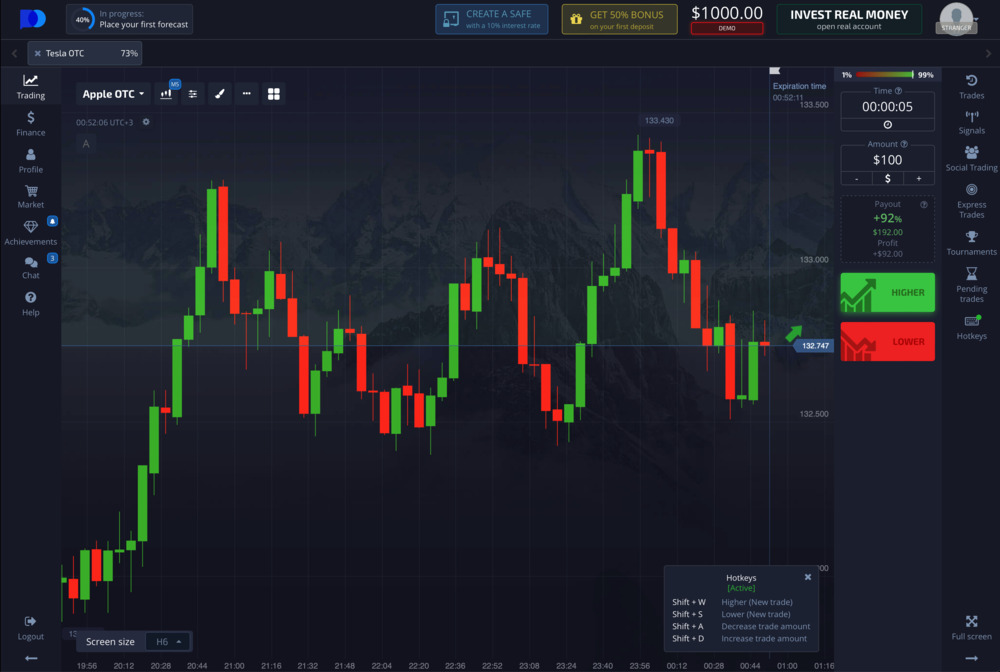
If you’re looking to improve your trading skills, mastering the Pocket Option Chart Setup and Analyses Pocket Option Настройка и аназиз графиков is crucial. Understanding how to configure your chart settings and conduct proper analyses can make a significant difference in your trading results. This article dives deep into the essentials of chart setup and analysis on the Pocket Option platform.
Understanding Pocket Option Charts
Pocket Option offers a variety of chart types to suit different trading strategies. Familiarizing yourself with these options is the first step in enhancing your trading experience. The primary chart types available include line charts, candlestick charts, and bar charts, each providing unique insights into market trends.
Line Charts
Line charts are the simplest form of visualization, displaying the asset’s closing prices over a certain timeframe. They provide a straightforward way to identify trends, making them suitable for traders who prefer a clean and uncomplicated view of price movement. However, they may not convey enough information regarding market volatility or price momentum.
Candlestick Charts
Candlestick charts are favored among many traders due to their ability to display multiple data points within a single candle. Each candlestick gives insight into the opening, closing, high, and low prices over a specific period. Learning to read candlestick patterns is essential for identifying possible market reversals, continuations, and overall sentiment.
Bar Charts
Bar charts offer a more compact view than candlestick charts but convey similar information. Each bar provides the opening, closing, high, and low prices, allowing traders to analyze price movement over time effectively. Understanding the psychological aspects of bar movements can refine your trading strategy.
Setting Up Your Charts

After selecting a chart type, the next step is to customize your settings to fit your trading strategy. The Pocket Option platform provides a range of tools and indicators that can enhance your chart analysis.
Timeframe Selection
Choosing the right timeframe is critical for successful trading. Depending on your trading strategy, you may prefer to analyze the market in different timeframes. Scalpers may opt for one-minute charts, while longer-term traders might focus on hourly or daily charts. The timeframe you select should align with your trading goals and risk tolerance.
Adding Indicators
Indicators are vital for technical analysis, providing insights that can shape your trading decisions. Popular indicators include moving averages, Relative Strength Index (RSI), and Bollinger Bands, among others. Each indicator serves a unique purpose and can indicate entry and exit points in a trade.
Moving Averages
Moving averages help smooth out price data over a specific period, enabling traders to identify the direction of the trend. A common strategy involves using two moving averages (e.g., a short-term and a long-term) to generate buy or sell signals based on their crossover points.
Relative Strength Index (RSI)
The RSI is a momentum oscillator that measures the speed and change of price movements. Values above 70 typically indicate that an asset is overbought, while values below 30 suggest it is oversold. Traders often use this information to make timing decisions in their trades.
Bollinger Bands
Bollinger Bands consist of a middle band (a moving average) and two outer bands that indicate volatility. When the price approaches the upper band, it may signal a potential reversal, whereas touching the lower band may suggest the price will rebound. Paying attention to these signals can enhance trading accuracy.

Conducting Market Analysis
Effective market analysis involves evaluating price movements and market dynamics to forecast future performance. Traders must combine technical analysis with market sentiment to make informed decisions.
Technical Analysis
Technical analysis is the study of past market data, primarily focusing on price and volume. By observing chart patterns and utilizing indicators, traders can identify trends and potential reversal points. Always consider multiple chart patterns and signals to increase the reliability of your predictions.
Fundamental Analysis
In contrast to technical analysis, fundamental analysis focuses on the underlying factors that influence asset prices, such as economic indicators, news events, and geopolitical developments. Traders should stay updated with relevant news and reports that could impact their chosen assets, as this information can significantly influence price movements.
Practical Tips for Successful Chart Setup and Analysis
Implementing effective chart setup and analysis strategies requires practice and discipline. Here are some practical tips to enhance your skills:
- Stay Consistent: Use the same chart settings consistently to track your performance accurately and refine your strategies over time.
- Keep Learning: The financial markets are always evolving, and ongoing education is key. Regularly explore new strategies, indicators, and analysis techniques.
- Practice Risk Management: Always have a risk management plan in place to protect your capital. Never risk more than you can afford to lose on a single trade.
- Review Your Trades: After each trading session, take the time to review your trades. Assess what worked, what didn’t, and adjust your strategies accordingly.
Conclusion
Mastering the Pocket Option chart setup and analyses is paramount for becoming a successful trader. By understanding different chart types, selecting the right settings, and conducting thorough market analyses, you can improve your decision-making and optimize your trading performance. Stay informed, keep practicing, and always adapt your strategies to the changing market conditions.



